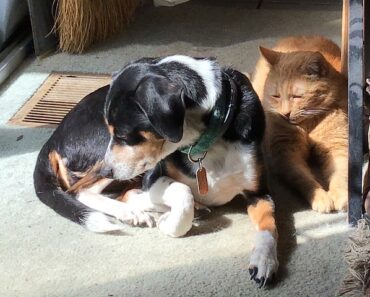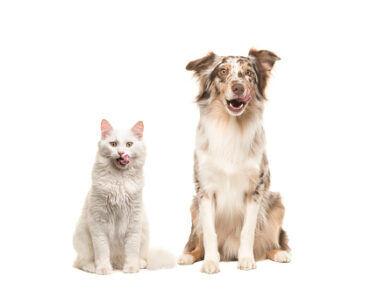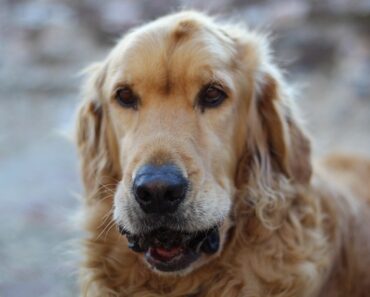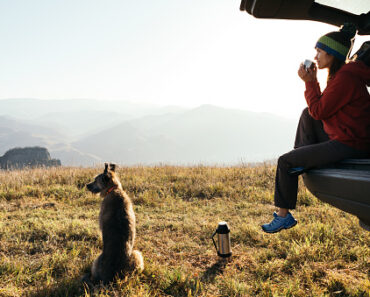
A dog needs a healthy and balanced diet adapted to all its vital needs and so that its organism and metabolism can develop in good conditions.
The amount of energy a dog consumes must be determined according to the breed of dog, but also according to its age and lifestyle. Indeed, even if the rations remain the same when the dog gets older, the dog’s needs in nutrients, proteins and others change over the years.
It is preferable to recommend a well-digestible food for optimal nutrition.
The dog is an animal with a very Cartesian mind and as a carnivore, he can only eat meat. Domestic dogs, on the other hand, can be finicky and reluctant to eat this or that food. It is at this point (and even from the beginning) that the master intervenes and sets the conditions to get the animal used to eating everything. It is also up to the owner to know his dog’s needs and to adapt accordingly.
There is now a very varied diet for the dog, whether it is dry food (dry food) or wet food (wet food).
Then comes the question: what to give your dog? What is best for him? In what quantity?
Dry food: dry food
Generally, kibble is chosen for its practicality and because it offers the best solutions to the dog’s different needs without disturbing his metabolism.
In this dry food, when you choose quality like Premium kibbles, you will find complete and balanced food. Moreover, with the croquettes, it is possible to choose a variety according to the breed of your dog, according to his age, according to his weight. And if the dog only likes dry food to a moderate degree, there are even kibbles for “difficult dogs”.
The kibbles are made up of all possible varieties; even if they look less appetizing than pâté for example, the kibbles offer the advantage of being able to be kept longer and anywhere. Wherever he is, whatever the time of day, the dog will always have a balanced diet with this type of food.
The kibble contains the vitamins and minerals necessary for the dog’s development and also ensures a partial cleaning of the teeth.
However, as dry food does not contain a lot of water, it is important to leave a bowl with fresh, clean water at the dog’s disposal.
Wet food
We then talk about pâtée and fresh bites.
This type of food has two major advantages: a high palatability (which is why dogs prefer it to kibble) and a high moisture content that will help the dog’s kidneys to work as they generally drink little.
However, wet food can cause oral pathologies (and the appearance of tartar) unless the owner cleans his teeth regularly.
This type of food keeps less well than dry food because once the can is opened, it must be consumed within 48 hours at the most to keep all its freshness and the qualities of its nutrients.
However, this type of food is recommended for animals that have difficulty chewing and chewing hard foods.
However, there are other feeding alternatives for the dog such as household rations: before starting this type of food, it is advisable to go to your veterinarian who will be able to indicate how much food is necessary for the dog and which foods may be suitable for him and which ones are to be avoided. Household rations are food prepared by the owner from fresh raw materials.
In the same vein, there is the dietetic food that is found mainly in the veterinarian’s office: there are two ranges, namely the physiological range for regular maintenance of the animal and a dietetic range that meets the specific needs of certain pathologies in dogs.
Attitude and rules for feeding your dog
With his dog, the master must keep his role so that the dog knows that it is not necessarily a reward and that all that he has to eat is good for him. It is essential to show him what he can and cannot do with the food and to get him used to eating as quickly as possible while being aware of his body’s needs.
The dog should eat at a fixed time, if possible after his master and preferably in the evening. If the dog refuses to eat after 30 minutes, his bowl must be removed so that he understands that he has no other alternative to hope for. After some time, he is offered his bowl and as his survival instinct will wake up, he will eat. In this apprenticeship, it is advised to give him croquettes so as not to waste the food.
One meal a day is enough for most breeds when the dog is adult.
It is very important not to vary the dog’s diet too much, which could lead to diarrhea. Any change in his diet should be made gently over a few days by gradually introducing the new food.
Warning: leftovers from meals are not balanced enough for a dog and this is not enough to make up a complete diet.
How much food should I give my dog?
If you choose to give an industrial food, whether wet or dry, the doses on the container are often prescribed according to the weight of the dog.
But if you choose to give premium food such as Premium kibbles, it is possible to have a small cup that will rationalize what is needed for the dog’s needs.
It is essential to weigh your dog regularly to know his weight but also to monitor the evolution of his metabolism.
The stomach will reach its final size around the age of 7 months on average: this is why during weaning (which will last until the age of 3 months), any food ration will be divided into 4 or 5 meals per day. Then, between 5 and 7 months of age, the number of meals will be reduced to 3 meals distributed between 7 am and 10 pm to teach him what night rest is.
Finally, from 7 months onwards, only one or two meals are given at most.
The dog’s food can be heated but this is not mandatory but a temperature of 18° is often recommended.
Premium or standard food
Premium foods
These are the most balanced foods that you can offer your dog because they have a high protein intake necessary for the dog’s muscular development. With Premium foods, the proteins are diversified in poultry, beef, fish. In this type of food, the fat intake, which is essential and contributes to the palatability of the beloved, is present, the fats being selected according to their contribution in essential fatty acids. In this way, all the dog’s needs are covered to increase the energetic power of the lover and improve its taste. Finally, the Premiums have a fiber intake that will allow a better digestion and a better intestinal transit.
Standard foods
This type of food is easier to find, especially in supermarkets. The prices are lower compared to Premium foods because the quality of the ingredients differs. Also, this type of food is less easily digested.
Nevertheless, there are standard foods for all stages of a dog’s life, whether puppy or senior.
Standard foods are often fattier and therefore more palatable.
How to read the kibble labels?
First of all, the law indicates that the following information must be given on the label: the average analysis in percentages, the list of ingredients, the vitamins in KG and the instructions for use, i.e. the recommended dosage.






